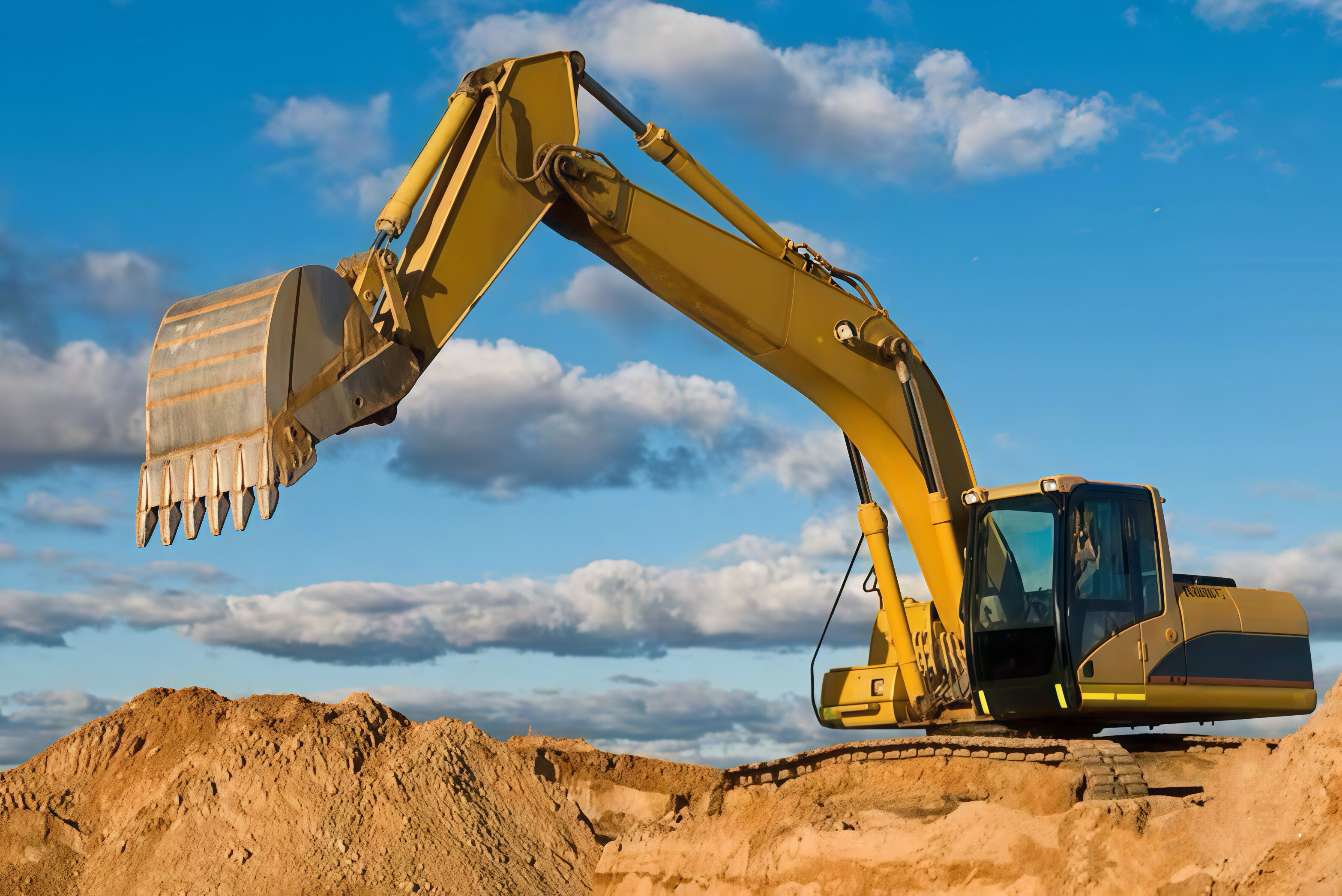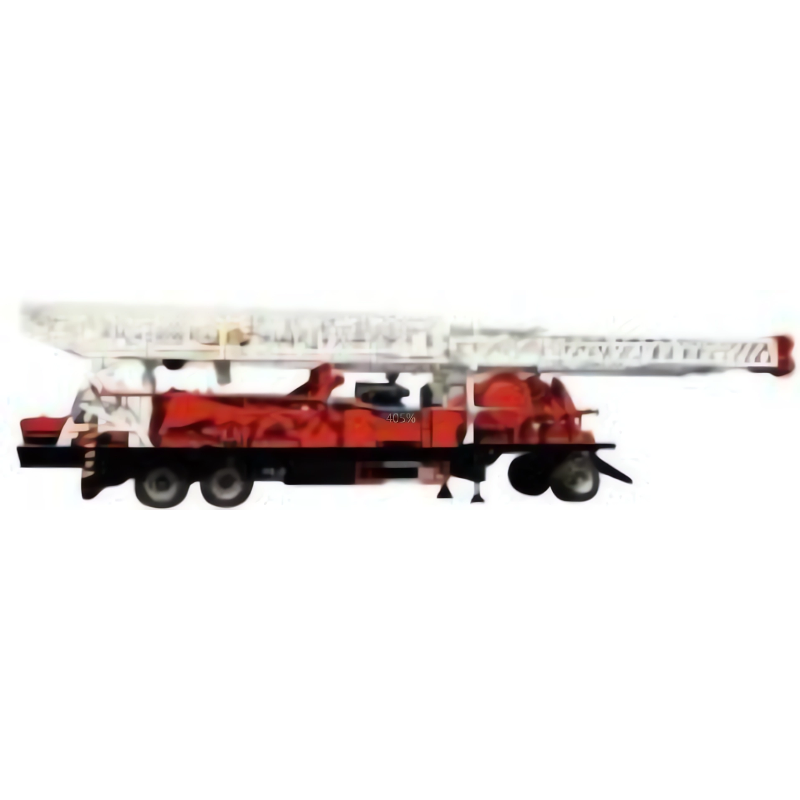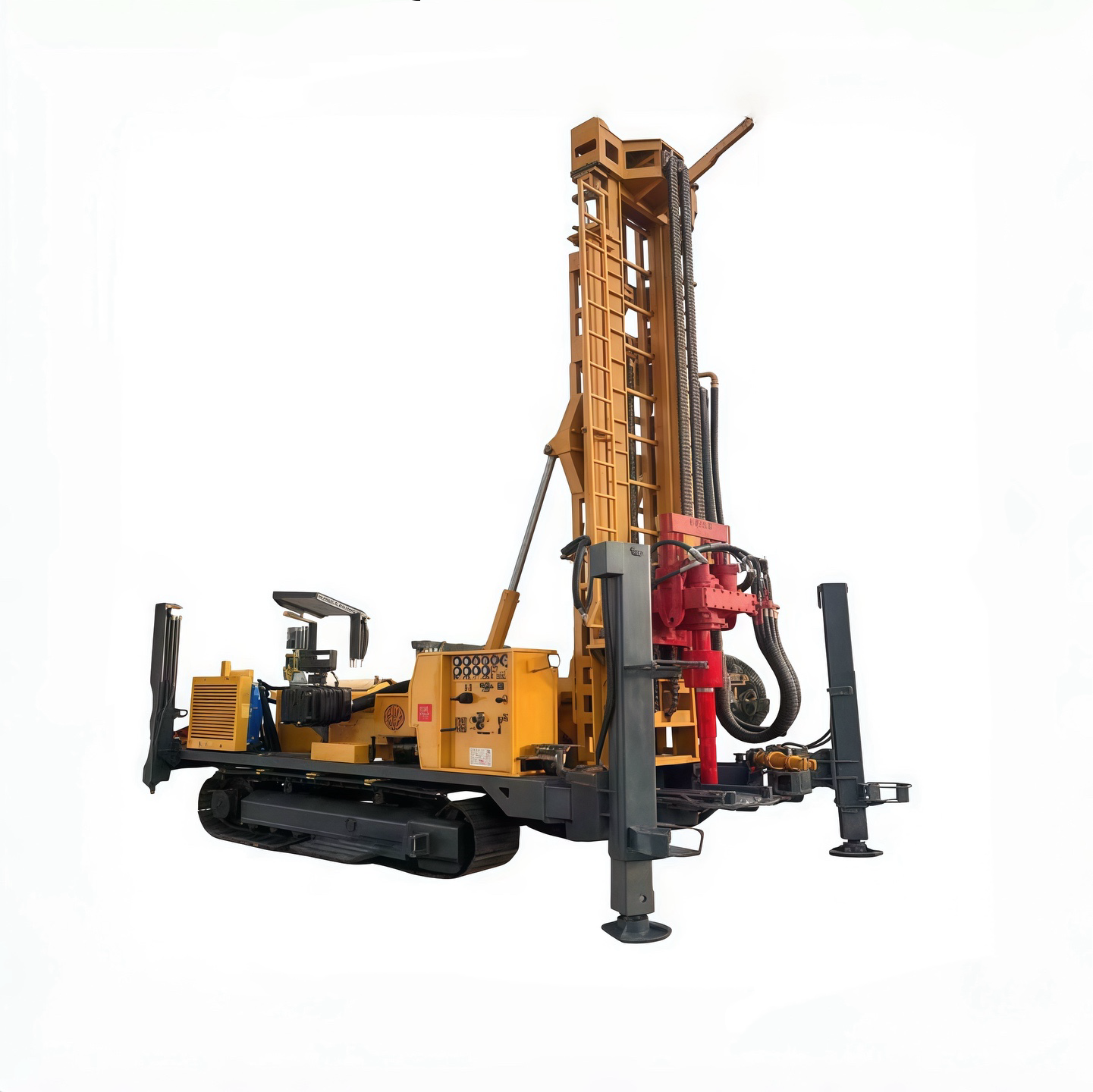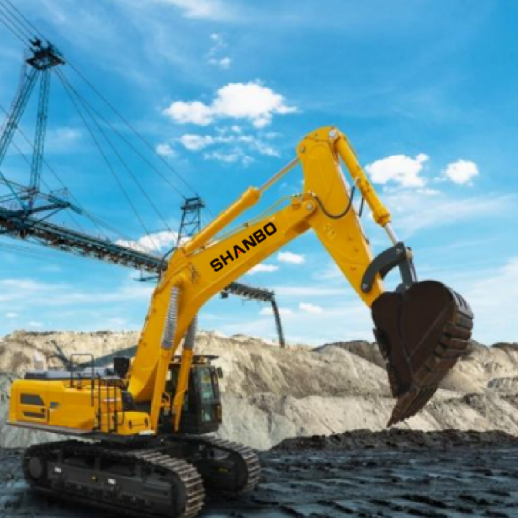Backhoe vs Excavator: Which Is Better for Your Construction Project?
Understanding Backhoes and Excavators: Core Differences
Defining Backhoes: Multi-Purpose Workhorses
Backhoes stand out as versatile workhorses with their unique setup: a digging bucket at the back and a loader up front. What makes these machines so valuable is their capability to tackle multiple jobs on site. They can dig trenches, move dirt around, load trucks, and even lift heavy objects when needed. Because they combine digging and loading functions in one unit, backhoes have become must-have tools for many construction sites, particularly those with limited space or budget constraints where having separate machines just isn't practical.
Backhoes have become pretty much everywhere on construction sites across America. About a quarter of all construction gear in the US happens to be these versatile machines. No wonder so many contractors depend on them day after day for various tasks around job sites big and small. These articulated beasts really shine when projects need serious digging power but also require moving stuff from one spot to another without hassle. They handle everything from trenching for pipes to loading trucks with excavated material, making them indispensable tools in modern construction work.
Excavators Explained: Specialized Earth Movers
Excavators are those big construction machines built for serious work, especially when it comes to digging through tough terrain. They have this bucket mounted on a long arm called a boom that lets operators dig deeper and reach further than most other equipment can manage. When compared to backhoes, excavators just plain outperform them when moving dirt around, which is why contractors grab these machines first whenever they need to tackle big digs, strip mines, or any kind of massive ground preparation job across industries like mining and infrastructure development.
Industry data shows that excavators generally beat backhoes by around 30% when it comes to heavy lifting and digging work because they're built much sturdier. The extra power makes all the difference on job sites where machines need to lift tons of concrete or dig through compacted soil. Excavators can tackle these tough jobs day after day without breaking down, which is why most contractors consider them essential equipment for any major construction project. Their ability to move massive amounts of material quickly saves time and money across the board.

Hydraulic Systems Comparison
Both backhoes and excavators rely heavily on hydraulic systems, yet the scale and complexity of these systems can differ notably. Excavators typically feature more extensive hydraulic cylinders than backhoes, enabling greater lifting power and efficient operations in larger excavation projects.
The big differences in hydraulic power really matter when it comes to how projects turn out. Knowing what kind of hydraulic capacity we're dealing with makes all the difference when picking equipment that actually fits what the job requires. When someone understands these capabilities, they can make smarter choices about machines. Take for instance, if the work is something small scale, maybe a backhoe would do just fine. But throw in something bigger and tougher? Then an excavator becomes necessary for those heavy lifting jobs on larger construction sites. The right match between hydraulic strength and task demands saves time and money in the long run.
Attachments and Customization Options
Backhoes and excavators both offer extensive attachment options that enhance their utility and adaptability on construction sites. Backhoes can be outfitted with various attachments like augers and grapples, enhancing their versatility across different tasks, from landscaping to demolition.
Excavators work well with all sorts of special attachments too, from big hammers for breaking concrete to those fancy multi-processors that do several jobs at once. When contractors equip these machines properly for what they need to do, it really pays off in the long run. Money talks here folks, getting the right tools attached means less downtime and fewer trips back to base camp. The flexibility is actually pretty amazing when looking at different construction sites across town. One day digging foundations for new buildings, next week clearing debris after storms, then maybe even helping out with road repairs somewhere else entirely. That kind of versatility keeps excavation equipment working hard instead of sitting idle in some dusty lot waiting for work.
Key Functional Comparisons
Digging Depth and Reach Capabilities
When it comes to digging depth and reach, excavators have a distinct edge over backhoes. Excavators often boast digging depths exceeding 20 feet, making them ideal for large-scale projects like digging foundations for buildings.
Backhoes typically dig down to about 14 feet at most. When digging deeper holes becomes necessary for big jobs like building foundations or mining operations, excavators tend to be what contractors reach for instead. These bigger machines have longer arms and way more muscle power to handle tough ground conditions. Picking between them really comes down to what exactly needs to get done on site. A good contractor will look at all the details of the project before deciding which type of machinery makes sense for getting the work completed efficiently without wasting time or money.
Maneuverability in Tight Spaces
In terms of maneuverability, backhoes shine due to their compact size and agile turning radius, making them perfect for urban construction sites where space is a premium. On the other hand, excavators, particularly mini excavators, offer a good balance of reach and maneuverability.
However, they may still fall short of backhoes’ versatility in very confined areas. Therefore, understanding the constraints of your project’s site is crucial when selecting equipment. Choosing the right machinery ensures that the work progresses smoothly without any unnecessary hurdles caused by space limitations.
Load Capacity and Bucket Sizes
The load capacity and bucket sizes between backhoes and excavators vary significantly, especially when considering the weight of materials involved. Excavators typically come equipped with larger buckets and higher load capacities, making them better suited for handling heavy-duty tasks and large volumes of material.
Conversely, backhoes have smaller buckets designed for versatility rather than high-volume loads, making them suitable for a variety of lighter tasks. It is vital to match the equipment specifications closely with project requirements to enhance operational efficiency and minimize unnecessary workload.
360-Degree Rotation: Excavator Advantage
One of the standout advantages of construction excavators is their ability to rotate 360 degrees. This capability allows them to operate efficiently without needing to reposition constantly, significantly enhancing productivity on larger job sites.
Backhoes can rotate to some extent, but workers usually need to move them around for different jobs, which makes them not as good as excavators when a project needs lots of direction changes. The full 360 degree turn comes in handy when moving heavy machinery from one spot to another takes too much time or just isn't practical. Think about big construction sites where things are constantly changing. Excavators save hours because operators don't have to stop work to reposition the machine. This saves money on labor costs and keeps projects moving forward without unnecessary delays.
Project-Specific Applications
When to Choose a Backhoe Loader
Backhoe loaders are optimal for smaller projects like landscaping and utility maintenance because they can efficiently perform multiple tasks. They are designed to handle digging and material handling, making them a versatile choice for diverse work functions in a single machine.
According to construction surveys, backhoes are favored for tasks involving less extensive earth-moving needs due to their compact size and versatility, especially in urban environments where space is limited. Their ability to travel at higher speeds also makes them suitable for jobs requiring movement over long distances.
Excavator Superiority in Large-Scale Projects
Excavators are the powerhouse of large-scale projects due to their unmatched power and efficiency. For tasks like road construction or preparing commercial building sites, excavators are the go-to machinery. They can handle larger quantities of earth and materials, which positively impacts project timelines.
Industry reports indicate that using excavators can lead to shorter completion times compared to backhoe operations, underscoring their superiority in major construction endeavors. With their ability to dig deeper and move heavier loads, excavators are indispensable for projects that demand extensive earthwork.
Mini Excavators for Urban Construction
Mini excavators are the preferred choice for urban construction projects due to their compact size, making them valuable in tight spaces and congested areas. They offer a balance of power and maneuverability, effectively serving residential and commercial construction needs.
According to equipment rental statistics, the demand for mini excavators in urban settings has been consistently rising, highlighting their role in smaller-scale developments. Their ability to operate efficiently in confined locations makes them crucial for urban projects aiming to minimize disruption while maximizing productivity.
Large Hydraulic Excavators for Mining
In the mining industry, large hydraulic excavators are indispensable due to their ability to handle heavy materials efficiently. Specifically designed for excavating deep and large holes, these machines can move vast amounts of earth, optimizing the mining process.
Expert analysis shows that the utilization of large excavators significantly impacts productivity rates in mining operations, making them a critical asset for extensive mineral extraction tasks. Their robust design and strong performance enhance efficiency, ensuring that mining activities proceed smoothly and swiftly.
Cost Analysis and Budget Considerations
Excavator Price vs Backhoe Investment
When considering the financial implications of purchasing construction machinery, excavators generally incur a higher initial cost compared to backhoes. This is because excavators are equipped with specialized components and possess a larger size which accounts for their increased price tag.
Smaller contractors might find backhoes more useful since they typically cost less upfront and can do multiple jobs at once. These machines handle both digging tasks and loading materials, so they work well on most small scale construction sites. Before buying though, anyone running a contracting business should really look at all the numbers involved. Think beyond just what the machine costs when new. Factor in regular maintenance expenses too, plus day to day operating costs. Getting this info straight helps keep budgets realistic and prevents unpleasant surprises down the road when making equipment purchases.
Rental Costs Comparison
Renting equipment is a common practice in the construction industry, and the rental costs for backhoes and excavators vary significantly, primarily driven by demand and size. Typically, backhoes have lower rental rates, which makes them a practical option for short-term, smaller-scale projects.
Because they're big machines with serious power, excavators tend to stay on site much longer than other equipment, which explains why they cost so much to rent. Anyone looking at rental budgets needs to factor in insurance coverage and regular maintenance checks too. These things can sneak up on a project manager if not planned properly. Good money management around excavator rentals keeps construction projects from going over budget and saves headaches when those surprise repair bills start coming in.
Fuel Efficiency and Operating Expenses
When it comes to keeping operational costs down, fuel efficiency plays a big role, particularly when comparing how much backhoes and excavators actually burn through gas. Most folks know that excavators tend to guzzle more fuel simply because they're bigger machines with more powerful engines under the hood. For contractors trying to stay within budget on jobsites, understanding these consumption patterns makes all the difference. A quick calculation of daily fuel usage against equipment rental rates or ownership costs helps avoid those nasty surprises at month's end when the invoice arrives. Smart operators track this stuff religiously, adjusting their fleet mix based on what makes sense for each particular job site conditions.
Industry reports emphasize the benefits of focusing on fuel-efficient equipment as a means of significantly reducing overall operational costs. Such strategic cost management can enhance project financials and contribute to more sustainable operational practices.
Long-Term Maintenance Requirements
Long-term maintenance needs significantly differ between excavators and backhoes, with excavators often requiring more specialized maintenance protocols. Understanding these potential long-term costs is essential, as they can influence purchasing decisions and budget allocations.
Looking at industry numbers, excavators generally run about 15% more expensive to maintain each year compared to backhoes according to equipment reports from construction trade associations. Contractors need to weigh this extra expense when deciding between machines. Excavators do offer better digging depth and reach capabilities which can make them worth the investment on certain jobsites. The real question becomes whether those performance advantages justify the higher maintenance bills over time. Most experienced operators suggest running the math based on actual job requirements rather than just going by sticker prices alone.
Terrain and Job Site Evaluation
Compact Excavators for Sensitive Landscapes
Compact excavators are tailored for use in sensitive landscapes where minimal disruption is vital. Their smaller size allows them to access difficult-to-reach areas, making them ideal for projects focused on environmental preservation, such as wetlands restoration or archaeological digs.
The need for specialized machinery in these sensitive environments becomes apparent when maintaining ecological balance is a priority. For instance, compact excavators' reduced footprint and careful handling ensure that the surrounding flora and fauna remain undisturbed, aligning with sustainable project goals.
Backhoe Stability on Uneven Ground
Backhoes are engineered for stability on uneven terrains, making them a practical choice for tasks like residential grading and landscaping. Their design provides a lower center of gravity, which enhances performance in challenging ground conditions, such as rocky or hilly areas.
It's imperative to understand site conditions when selecting equipment; choosing a backhoe in these situations not only improves operational safety but also ensures efficiency. The stability of backhoes offers operators the confidence needed to work efficiently without fearing tipping or other mishaps associated with unstable terrain.
Tracked vs Wheeled Excavators
When assessing which type of excavator to use, the distinction between tracked and wheeled models is pivotal. Tracked excavators excel in muddy or unstable ground conditions due to their larger footprints and superior weight distribution, making them indispensable on construction sites with loose soil or clay.
On the other hand, wheeled excavators offer greater speed and mobility on solid surfaces, making them perfect for urban settings and flat terrains where maneuverability and surface compatibility are key. Deciding between these options requires a thorough terrain evaluation to ensure optimal equipment performance and project success.
Slope Handling Capabilities
Evaluating slope handling capabilities is a critical task, as different models of excavators and backhoes vary in their effectiveness on steep land areas. Generally, excavators come with advanced features to manage slopes efficiently, reducing the risk of tipping and accidents.
Certain industry standards recommend specific types of machinery for varying slope angles to ensure worker safety and operational efficiency. Choosing equipment with proper slope handling abilities mitigates risks and enhances project timelines by allowing operations to proceed smoothly even on challenging terrain.
Specialized Equipment Considerations
China Mini Excavator Market Overview
The China mini excavator market has seen remarkable growth characterized by a consistent compound annual growth rate of approximately 8% in recent years. This surge can be attributed to the increased application of mini excavators in urban construction projects and residential landscaping activities.
Mini excavators have become a real favorite among contractors thanks to their ability to handle tight spots and awkward areas where big machines just won't fit. These little workhorses offer both efficiency and flexibility when space is limited. With all the new infrastructure development happening across the country, we're seeing a steady rise in demand for these compact excavators. Many construction crews now consider them practically indispensable on job sites, especially for urban developments or renovation work in existing structures where bigger equipment would cause more problems than it solves.
Large Excavators for Sale: Key Features
Large excavators are engineered with robust features that cater to heavy-duty tasks, making them indispensable for large-scale construction projects. Noteworthy features include advanced hydraulic systems, high load capacities, and extended reach, allowing them to perform complex excavation tasks with ease.
Looking at buying a big excavator? Don't just check off the standard specs sheet stuff. Real world operators know fuel burn rate matters almost as much as digging power when calculating total ownership costs over time. Market research shows something interesting happening right now. More contractors want machines built to last through tough jobsites, with tech upgrades that actually make work faster rather than just look good on paper. The best models combine solid steel frames with smart hydraulics systems that save money month after month while keeping downtime low during critical projects.
Compact Excavator Attachments
The operational versatility of compact excavators can be significantly elevated through the use of specialized attachments such as buckets, forks, and trenchers. Selecting the right attachment is a strategic decision that directly enhances the utility and efficiency of a compact excavator on various job sites.
According to industry data, projects that effectively utilize the appropriate attachments can witness a productivity improvement of up to 40%. This indicates that the choice of attachments can profoundly impact worksite functionality and project outcomes, underscoring the importance of alignment between equipment and task requirements.
Key Factors in Selecting Between Backhoes and Excavators
Environmental Impact Comparisons
Evaluating the environmental impact of excavation machinery involves considering factors such as fuel sources and emissions. Recent studies emphasize that modern excavators are increasingly designed with eco-friendly technologies aimed at minimizing their environmental footprint, making them a preferred choice for environmentally-conscious projects.
By incorporating features that support sustainability, excavation machinery is evolving to meet the growing demand for greener construction solutions. As decision-makers, it is paramount to assess the sustainability attributes of such machinery to make informed procurement decisions that align with ecological goals and regulations.
Project Duration and Scale Assessment
When planning any construction or excavation project, assessing the project duration and scale is vital for determining the appropriate equipment. Larger projects often necessitate the use of heavy-duty machinery capable of handling increased demands.
Backhoes work fine for those quick jobs or smaller sites because they can do so many different things, but when it comes to bigger operations over extended periods, nothing beats what an excavator brings to the table. The real difference becomes apparent once projects grow in scope and duration. When planning out any construction work, taking time to look at exactly what needs doing makes all the difference in picking between machines. A lot of contractors find themselves stuck between options until they actually break down the details of each job site. Getting this right means having the proper gear on hand without wasting resources or missing deadlines down the road.
Operator Skill Requirements
Operator skill plays a big role in choosing between backhoes and excavators. These machines vary quite a bit in how complicated they are to operate, so getting proper training matters a lot if someone wants to get the job done right. Take backhoes for example they generally don't need as much skill because operators can do digging and loading work with the same machine. Excavators tell another story though. Most contractors will tell anyone who'll listen that running an excavator takes real know-how since these beasts handle all sorts of intricate tasks from trenching to demolition work where precision counts.
Understanding operator certification and licensing requirements is essential, as they can influence both project timelines and productivity. Many companies invest in comprehensive operator training programs to ensure both safety and efficiency in machine operation, leading to better project outcomes.
Resale Value Projections
When looking at construction machinery investments, nobody should overlook what happens when it comes time to sell later on. Backhoes tend to hold their value pretty well in most markets since they can handle so many different jobs around job sites. The same isn't always true for excavators though. Specialized models often lose value much more slowly compared to general purpose machines, which makes sense why contractors keep coming back to these big diggers even though upfront costs might be higher. For those thinking about long term returns, this difference matters quite a bit in the工程机械 industry.
Industry insights suggest that maintaining a detailed record of machine performance and regular maintenance can positively influence resale projections. By understanding these market trends, companies can make informed choices about which equipment to invest in for the best potential return over time.
Conclusion
Knowing the real differences between backhoes and excavators makes all the difference when picking equipment for construction jobs. We've covered what matters most when deciding between these workhorses, looking at where they shine best, how much they'll cost to operate, and what each machine can actually do on site. Getting this straight helps contractors pick the right tool for the job, which saves time money and headaches across different types of construction projects from digging foundations to grading land.
Shanbo, as a professional construction equipment manufacturer, offers an impressive range of excavators tailored for diverse construction projects. Prioritizing reliability and performance, Shanbo's excavators are engineered to deliver durability and efficiency, making them an excellent choice for handling a variety of excavation tasks.
Recommended Products
 Hot News
Hot News
-
“Water Savior” 200 m Reverse Circulation Water Well Drills Arrive in Uzbekistan
2025-03-28
-
What Is a Bulldozer? Everything You Need to Know
2025-02-18
-
Skid Steer vs Bulldozer: Cost, Efficiency, and Versatility Compared
2025-11-13
-
Inside the Bulldozer Factory: How Modern Dozers Are Built from the Ground Up
2025-11-12
-
How to Operate a Spider Excavator Safely and Efficiently
2025-11-11
-
What Is an Excavator? A Beginner’s Guide to This Essential Construction Machine
2025-11-10












